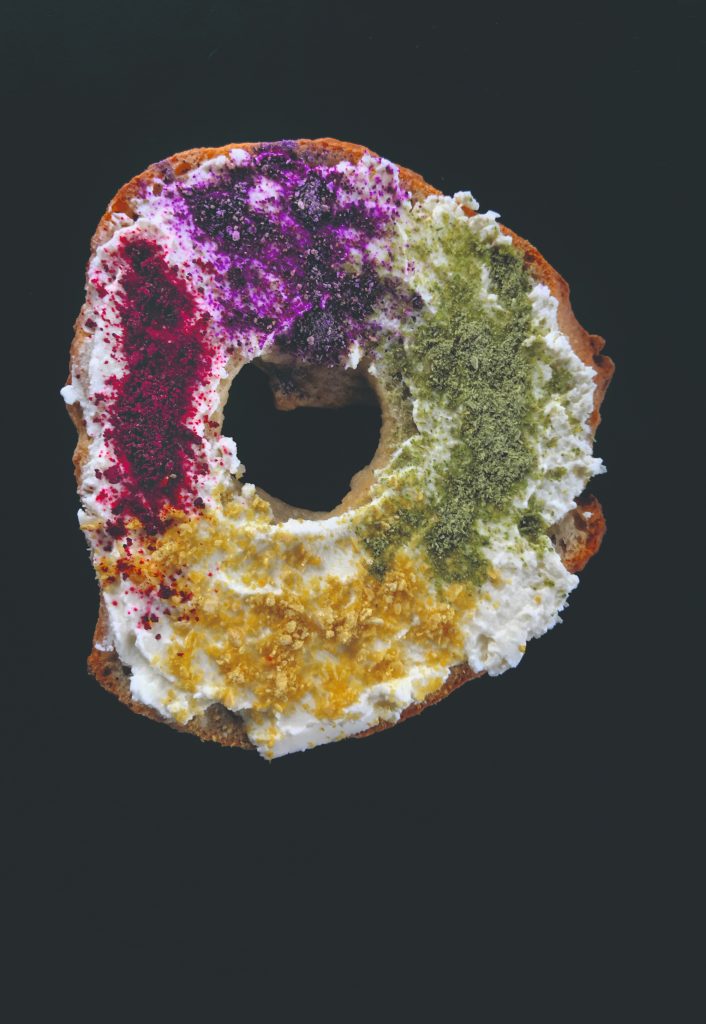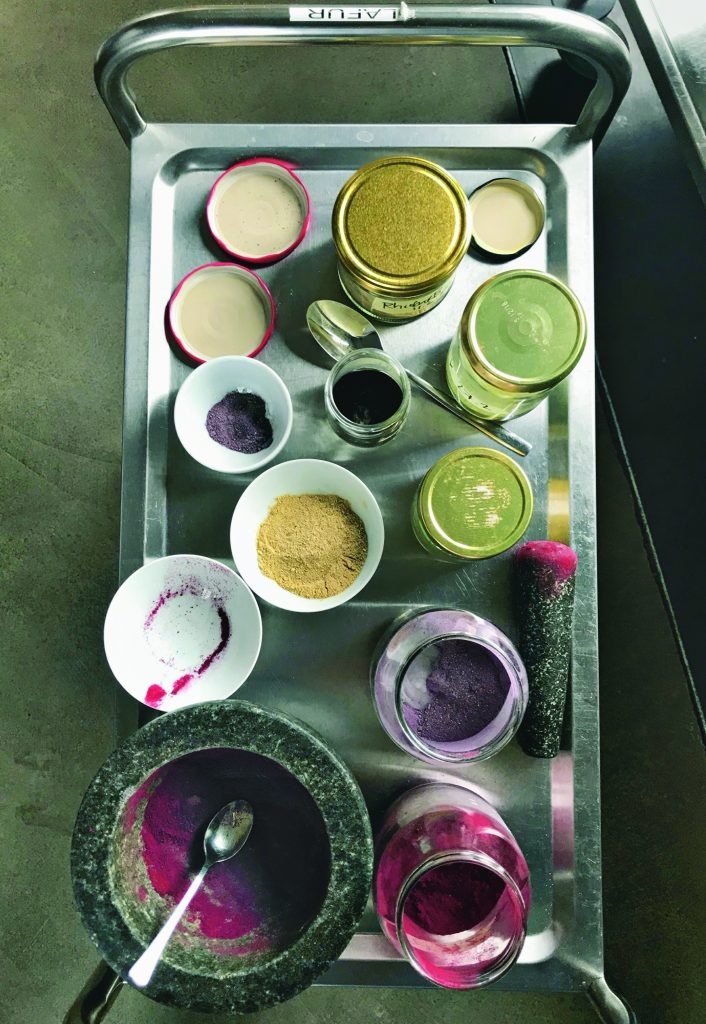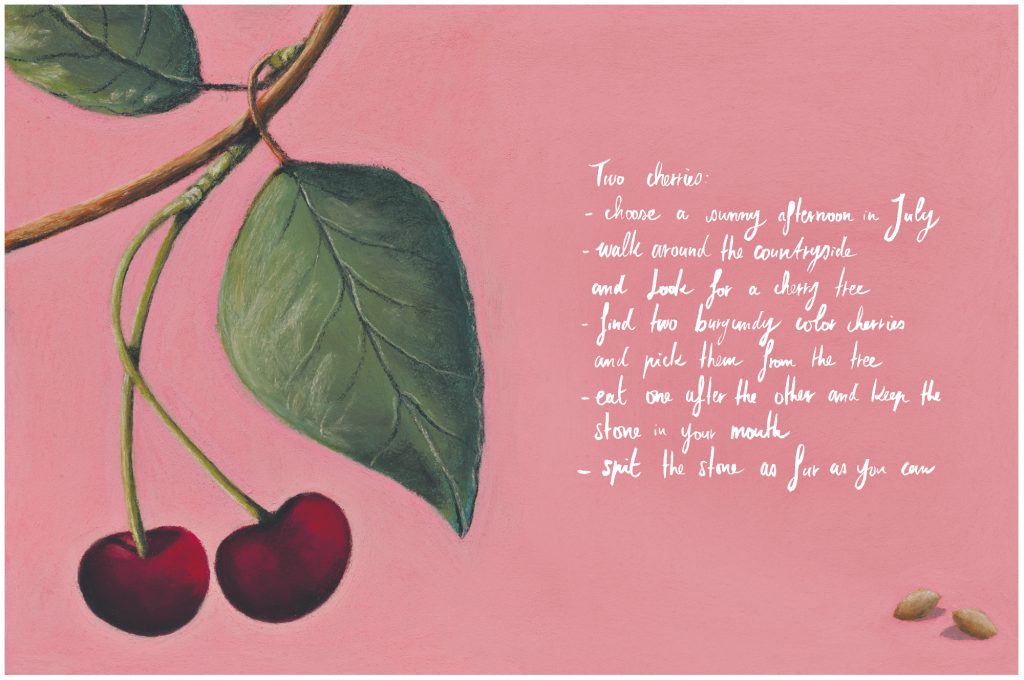Books
For a Creative Holiday Dinner, Try These Recipes for Olafur Eliasson’s Sourdough, Natalia LL’s Custard, and Nicolas Party’s Cherries
Read an excerpt from the new book "The Kitchen Studio: Culinary Creations by Artists."

Read an excerpt from the new book "The Kitchen Studio: Culinary Creations by Artists."

Artnet News

Just in time for the holidays, Phaidon has released a compendium of recipes by some of the world’s leading artists, including Ghada Amer, Jimmie Durham, Carsten Höller, Dorothy Iannone, and more. As we celebrate Thanksgiving this week, we bring you part one of a two-part series excerpting a few of these artists’ strange, delicious, and very creative personal recipes.

Natalia LL, Vanilla Custard. Photo: Consumer Art, 1972-1975. Courtesy of the artist, Luhring Augustine, New York and i8 Gallery, Reykjavik.
Custard is a traditional and cheap Polish dessert. In the 1970s, Natalia LL prepared it frequently for shooting photographs and films from the Consumer Art series.
Makes about ½ liter
Ingredients:
½ liter milk
1 tablespoon butter
½ vanilla pod (bean)
3½ tablespoons sugar
2 egg yolks, beaten
2–3 tablespoons potato starch
(depending on whether thicker or thinner custard is preferred) preserves, fruit syrup, fruits or chocolate sauce, to serve
Method:
Simmer two thirds of the milk with the butter and vanilla pod (bean) in a pan over low heat.
In a bowl, mix the rest of the milk with the sugar, egg yolks and potato starch.
Pour the contents of the bowl into the simmering milk over low heat, stirring constantly to prevent lumps from forming.
When the custard thickens, boil it slowly, stirring, for another 1–2 minutes, then remove from the heat. Remove and discard the vanilla pod. The custard can be served with preserves, fruit syrup, fruits or chocolate sauce.

Photo: Studio Olafur Eliasson.
Vegan Butter
Makes about 400 ml
240 ml cocoa butter or mild/refined coconut oil
(for a neutral taste)
120 ml sunflower or other neutral-tasting oil
60 ml plant milk, such as almond, oat, rice
½–1 teaspoon salt
Warm the cocoa butter or coconut oil in a saucepan over low heat just until it melts. Whisk in the other ingredients, transfer to a mixing bowl, then put in the fridge for 10–15 minutes until cooled. Using a hand-held mixer, whip until the mixture reaches the desired consistency (it should reach a light and fluffy stage after 2–3 minutes). Place in an airtight container and store in the fridge for up to 2 weeks or in the freezer for up to 3 months.
Studio Sourdough Bread
Makes 1 loaf, plus extra sourdough starter
DAY 1:
50 g of your starter (your ‘old’ sourdough); alternatively, you can buy a starter kit or ready-made sourdough starter
100 g rye flour
100 ml warm water
Feed your sourdough (if using homemade sourdough): in a bowl, mix the starter with the flour and water. The idea is to make enough for the recipe while keeping some aside as your starter for next time.
Divide the resulting dough into two portions: 100 g and 150 g. Use the 100-g portion for the recipe and let it rise in a bowl covered with a clean dish towel at room temperature for approximately 12 hours (maybe less in the summer and more
in the winter). Put the remaining 150-g portion into a jar with a lid. Both portions should double in size. Use the 100-g portion for baking the next day. Keep the 150-g portion in the jar in
the fridge for next time.
DAY 2:
100 g risen sourdough
500 g strong white bread flour
125 g wholegrain spelt flour
400 ml lukewarm water
18 g salt
1 x proving basket or sieve for the overnight rise 1 x 5-litre ovenproof pot with a lid, for baking
Mix all the ingredients in a large bowl for about
8 minutes. Cover your bowl with an airtight lid and let it rest for 90 minutes. After 90 minutes, it’s time to begin folding the dough. At this stage, you will work in the bowl. Dip your hands in warm water, grab the underside of the dough, stretch it and fold it back over itself. Rotate your bowl one-quarter turn and repeat 3–4 times. Repeat this every 30 minutes, 3 times.
Flour your work counter. Now take the dough out of your bowl: slip a spatula under the dough and flip it onto the floured counter. Pull the bottom of the dough up to fold into one third of the round. Pull each side and fold over the center to elongate the dough vertically. Fold the top down to the center and then fold the bottom up over the top fold-down, leaving the seam underneath. Let the dough rest for a few minutes, seam-side down, so that the seam seals.
Roll the dough into a ball, turn and put it upside- down in a well-floured proving basket (or in a sieve lined with a clean, well-floured dish towel).
Overnight, keeping the dough in the basket,
let the dough rest in the fridge.
DAY 3:
Preheat the oven to 250°C (480ºF). Place your ovenproof pot (with the lid on) in the oven to heat and, when fully heated, carefully place the pot on a heat-proof surface, take the lid off, carefully flip your bread upside-down into the pot and cut your signature into the dough using the tip of a sharp knife (to allow the bread to rise properly).
Put the lid back on and place the pot in the oven. Bake for 45 minutes. Remove the lid and let the bread bake for another 10 minutes. If you keep the high temperature, the crust will turn dark brown. If you lower the heat a bit, the crust will be lighter.
Take your bread out of the oven, remove it from the pot right away and place it on a cooling rack.
To serve
Either sprinkle the food pigments onto the buttered bread or dip the buttered bread into the pigment. If you like, add salt to taste.
Note: We use biodynamic ingredients. Make sure your ingredients are organic and come from a credible source guaranteeing the peels are free from pesticides and chemical treatments.

Nicolas Party, Two Cherries. Courtesy of the artist.
Excerpted from The Kitchen Studio: Culinary Creations by Artists by Phaidon Editors, with an introduction by Massimo Bottura. Copyright © 2021 by Phaidon Editors, with an introduction by Massimo Bottura. Excerpted by permission of Phaidon Press. All rights reserved. No part of this excerpt may be reproduced or reprinted without permission in writing from the publisher.